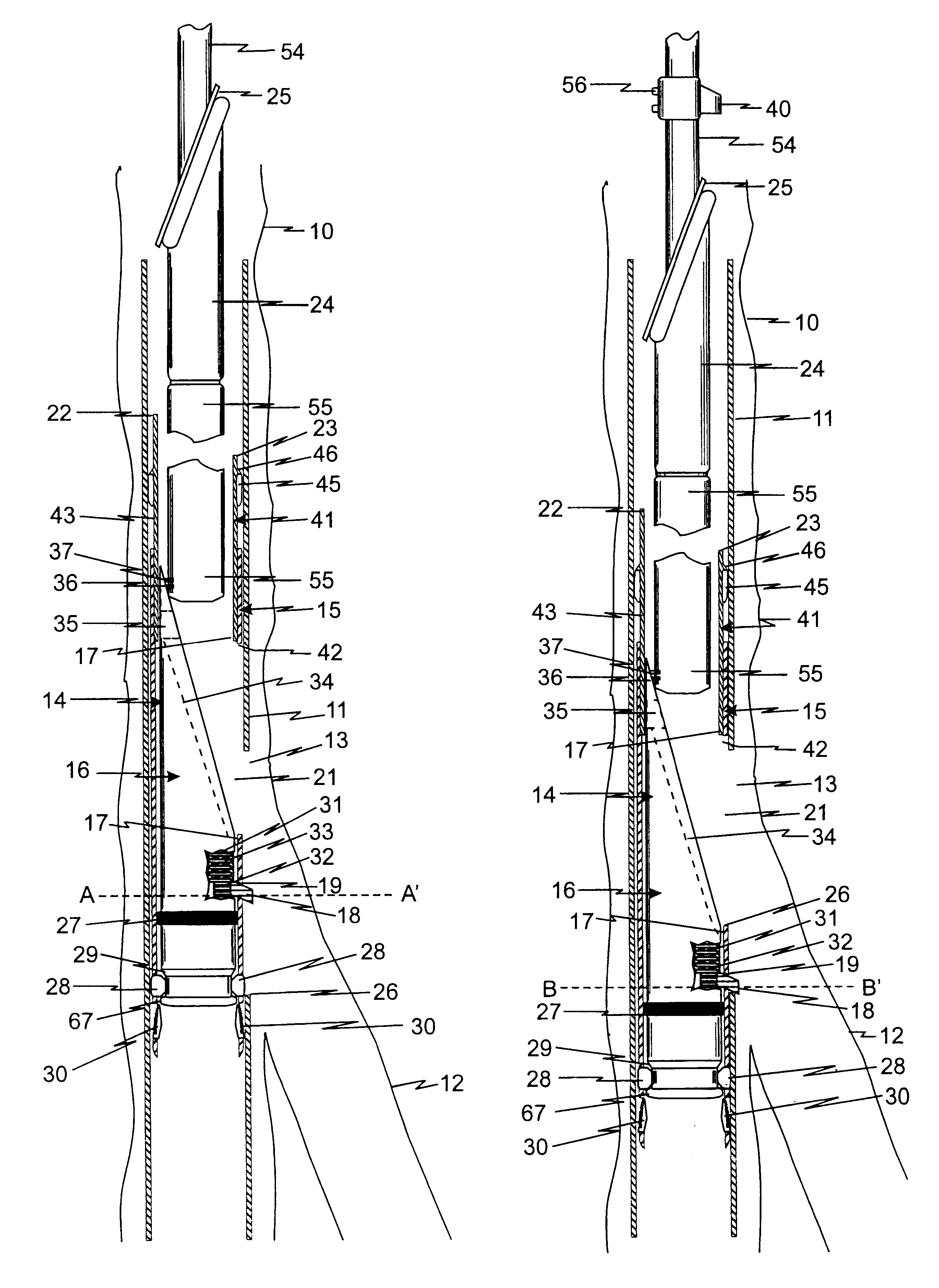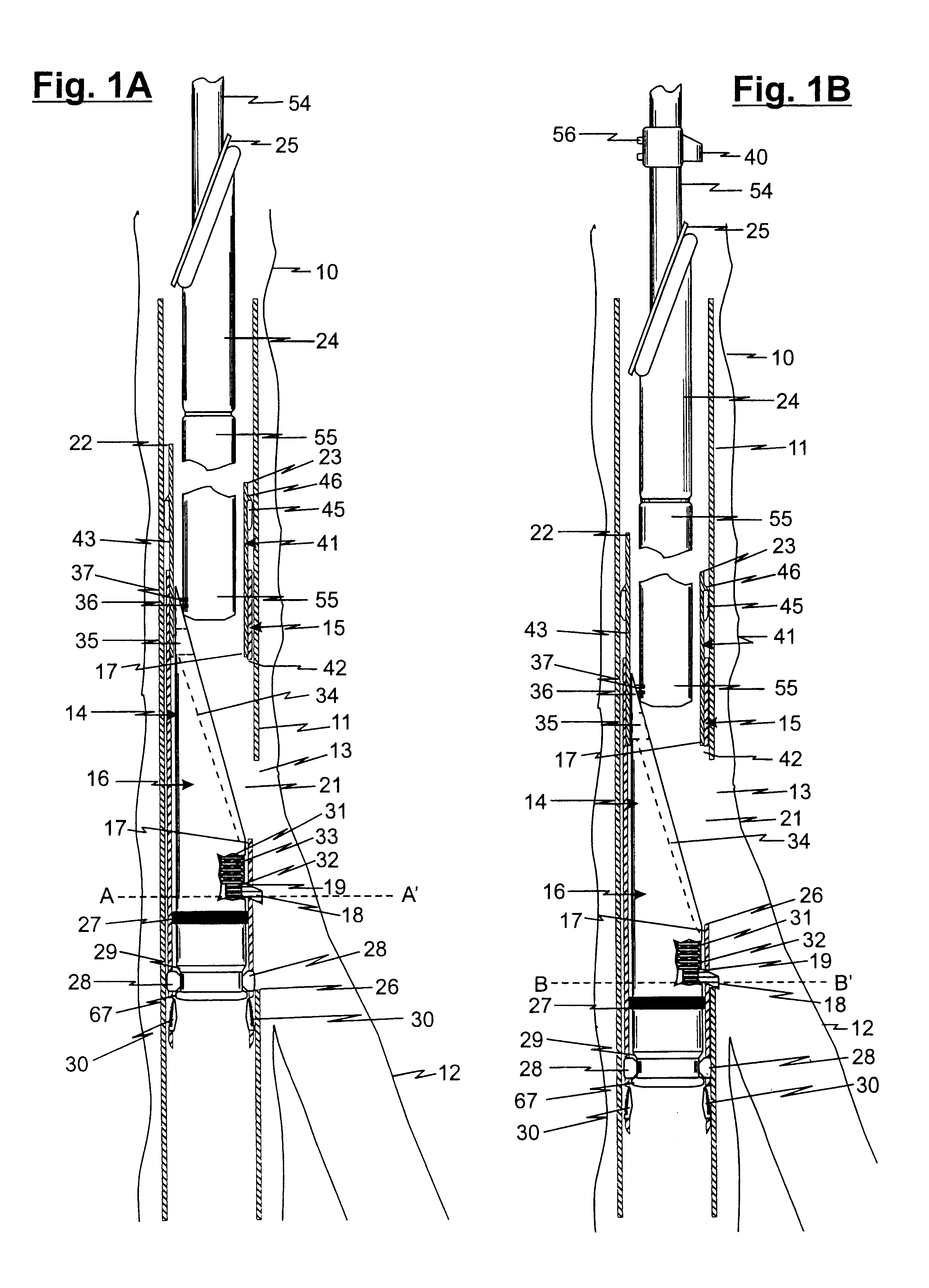Assembly and method for forming a seal in a junction of a multilateral well bore
a multi-lateral well and junction technology, applied in the direction of directional drilling, borehole/well accessories, construction, etc., can solve the problems of limited completion options, inability to use current technology, and primary barriers to the increased use of multi-lateral technology, so as to prevent the migration of fluids, prevent the effect of migration and cost saving
- Summary
- Abstract
- Description
- Claims
- Application Information
AI Technical Summary
Benefits of technology
Problems solved by technology
Method used
Image
Examples
Embodiment Construction
Referring now to FIG. 1A wherein a representational main well bore is generally shown as with a main well bore casing shown at 11, it should be understood all through out the teachings of this invention that while the drawings and discussion about the preferred embodiments may refer to vertical for the main well bore 10 or main well bore casing 11, they, in fact, may be in a vertical position, or deviated therefrom, or a horizontal position, without departing from the teachings of this invention. Further it should be understood that the references to up hole and down hole as shown in the drawings and discussions about the preferred embodiment, may, in fact, in the ground be horizontal on occasions or even have up hole and down hole reversed, but the general teaching is that up hole mean back toward the surface of the ground and downhole means into the hole in the opposite direction from up hole whether it is down hole or not in the well. Similarly the term lateral well bore or a mul...
PUM
 Login to View More
Login to View More Abstract
Description
Claims
Application Information
 Login to View More
Login to View More - R&D
- Intellectual Property
- Life Sciences
- Materials
- Tech Scout
- Unparalleled Data Quality
- Higher Quality Content
- 60% Fewer Hallucinations
Browse by: Latest US Patents, China's latest patents, Technical Efficacy Thesaurus, Application Domain, Technology Topic, Popular Technical Reports.
© 2025 PatSnap. All rights reserved.Legal|Privacy policy|Modern Slavery Act Transparency Statement|Sitemap|About US| Contact US: help@patsnap.com



